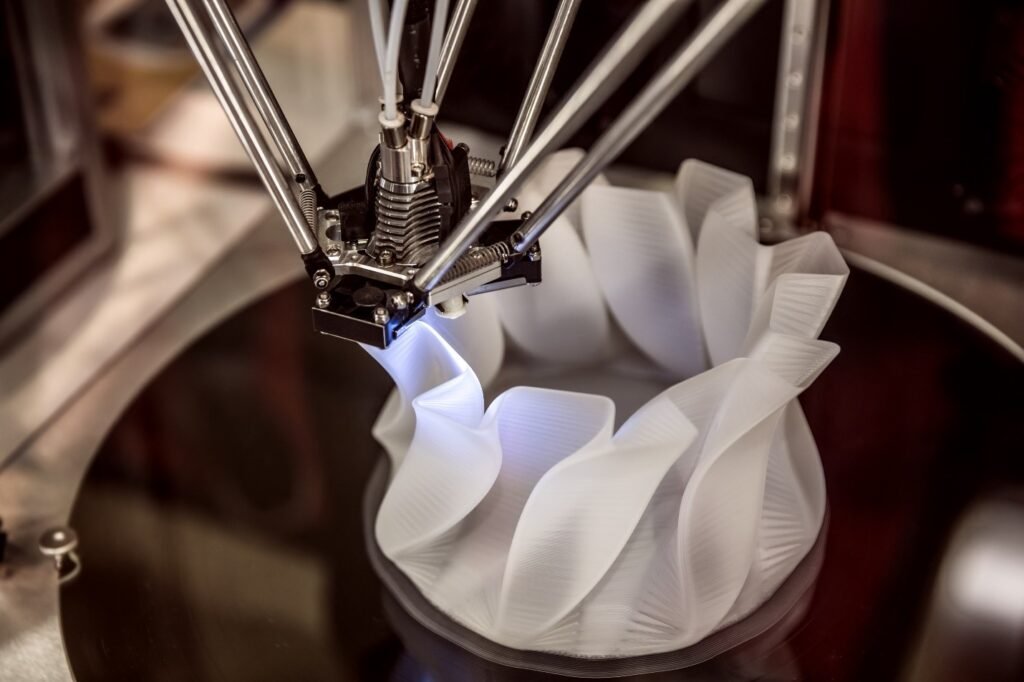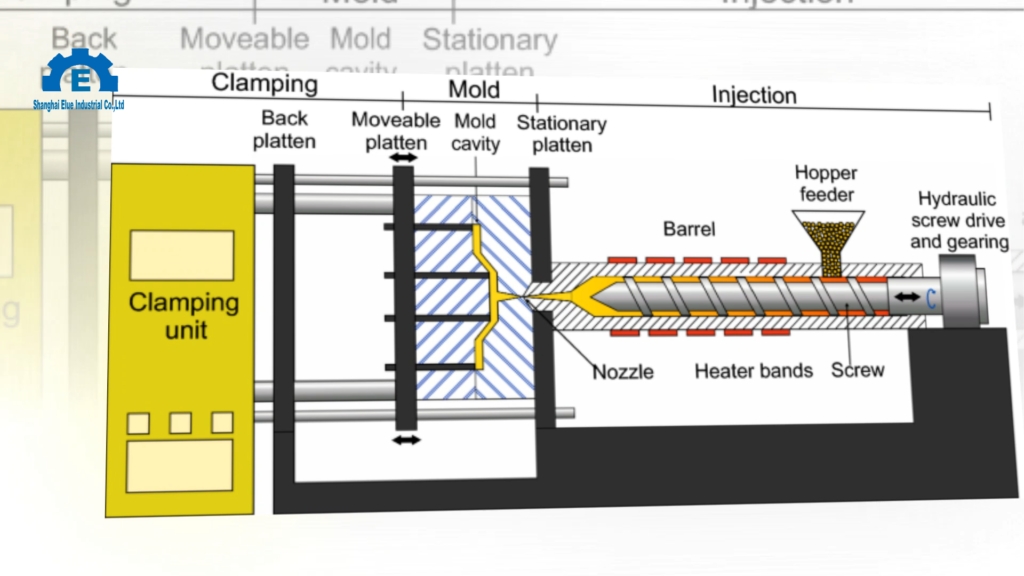CNC machining stands for Computer Numerical Control machining, frequently used in different manufacturing sectors. CNC technology renders a multifaceted, automated process that yields superior quality bulk productions. Properties like sky-high precision, efficiency, and mechanization have made it a perfect choice for multiple manufacturers.
Manufacturing Processes
The creation of products done using manpower, machines, tools, and biological or chemical processing is known as a manufacturing process. Manufacturing can either mean converting the raw material into a finished product on a macroscale, or the production of more complicated items by creating basic goods for other manufacturers for the production of items such as medical, electronics, automotive, etc.
Raw materials are altered into end products using various manufacturing processes. Manufacturing starts with the product design and suitable materials selection. Then materials are transformed using various manufacturing processes to create the finished product.
There are various types of manufacturing processes. But we will discuss widely used three common kinds of the manufacturing process.
Subtractive Manufacturing Process
A process by which 3D parts are manufactured by successively material cutting to a desired final shape and size by a controlled material removal process. A subtractive process can be carried out by manually cutting the material but is most typically done with a CNC Machine.

Additive Manufacturing Process
Additive manufacturing is sometimes referred to as 3D printing. An advanced technology that uses successive layers of material deposited according to digital 3D design data to create 3D objects. Unlike a subtractive manufacturing process where materials are removed, additive manufacturing creates the parts up layer by layer from material supplied as a fine powder.

Formative Manufacturing Process
This manufacturing process makes the use of stresses like compression, tension, shear, or some combination of these to cause the plastic deformation of a material into a desired shape and size. Like injection molding. This manufacturing process is typically used for plastics and metals materials. No material is added or subtracted in this process.

What is CNC Machining?
CNC machining is a subtractive manufacturing process in which a piece of material is converted into a custom-designed part with the help of coded programmed instructions and different machine tools.
This subtractive cutting technology provides the most complex designs to be manufactured at a mass scale with high accuracy at a faster rate. The process is controlled by computer-coded programmed instructions that reduce the room for errors which in some cases can be very crucial.
CNC machining equipment can execute similar coded programmed instructions repeatedly as needed to capacitate the fabrication of prior parts. CNC machines are available in different verities depending upon the complexity level. Some machines can grasp the workpiece or tool and move it along three axes (X, Y, and Z). But some precision machines can move workpieces or tools along three axes as well as rotate in a, b axes (or c).
CNC Machining Workflow
CNC machining was initially numerical control (NC) only that used punched tape cards and after introducing computers into the process that now has become computer numerical control (CNC). It makes the use of computer control instructions to operate and process a stock material into customized parts by manipulating machines and different cutting tools.
The basic CNC machining workflow can be divided into four main steps.
- Designing CAD
- Generating CAM Code
- Machine Setup
- Performing Machining Operation
First of all, we carefully design highly intelligent designs using software called CAD. Secondly, we create instructions according to the design that describes how to carve it. This process is called CAM. Then the machine is being set up and finally, we hand these instructions over to the machine and this is normally done with a digital interface. When these steps are completed then we hit the start button and the machine cuts the design out.
Let’s discover each step thoroughly
Designing CAD
CAD stands for computer-aided design and it is software that is used to create a 2D vector or 3D solid part CAD design. With this software, we create a model of the part or product with the most accurate technical specifications. Once, design is created then the designer exports the file into CNC-supported file formats such as STEP or IGES.
Generating CAM Code
At this stage, the CAD design file is converted into a programming code using CAM (computer-aided manufacturing) software. Which then dictates CNC machines and different tools to produce the part.
Programming languages used in the CNC machining process include G-code and M-code. The language that controls and instructs the movement of machine tools to attain the desired shape is called G-code (G-code stands for general or geometric code). M-code stands for miscellaneous code which controls miscellaneous machine actions that include starting and stopping any particular actions or programs during the machining process.
Once CAM code is generated then it is transferred to the machine.
Machine Setup
Before operating the CNC machine, set the machine up for proper working. The workpiece is fixed into the right place and attached required tools like drill bits and others for accurate and efficient product outcome.
Performing Machining Action
CAM-generated G-code and M-code programming instructions being integrated through a computer guide the machine and tools, when and how to execute specific machining actions. When the computer passes all the programming codes and the machine executes them accordingly then we get a final customized product. In this way, you can get mass-produce complex parts or products.
Materials That Can Be CNC Machined
CNC machining is used to manufacture parts and components for almost every industry and application. Precision technology can process almost any material one can think of. It offers a vast range of materials to obtain essential characteristics in the final product.
Metals
It can process many metals such as aluminum, brass, titanium, steel, etc. But the most preferable will be the one that delivers the required product qualities.
Plastics
CNC machined plastics include Acrylonitrile Butadiene Styrene (ABS), Nylon, Acrylic, Polycarbonate, etc.
Wood
Wood is comparatively used less. Hardwood, plywood, softwood, etc. are amongst those that are used routinely.
Foam
Foam finds numerous applications in different industries. Carving foam and rigid foam are predominantly used in CNC machining.
What Industries Use CNC Machining
CNC machining is used in almost every industry around the globe in some or another way. Especially, large-scale manufacturers prefer it. It is becoming a valuable asset in the manufacturing of intricate and complex parts for diverse industries. Few important industries that rely on precision machining are
Military and Defense Industry
Marine Industry
Aerospace Industry
Medical Industry
Automotive Industry
Oil and Gas Industry
Electronics Industry
Advantages of CNC Machining
CNC machining is preferred by many sectors because of its unmatchable advantages. It offers streamlined, convenient, and precise manufacturing capacity for creating large-scale productions. The computer-numerical control process also provides many financial and production benefits as compared to other conventional and advanced manufacturing techniques. Below is a compilation of the main advantages of CNC machining
Increased Productivity
CNC machining premises can operate for a longer time and workshops can meet production needs by operating 24/7 with hardly slight human involvement. Since CNC machines are automated through programming. It authorizes CNC facilities to execute a complicated sequence of varied processes automatically. Meanwhile, energy can spend in dealing with other matters. Which finally brings productivity.
Cost-Effectiveness
CNC machining more than fabricate for its initial costs with a highly esteemed yield and accurate products. Computer control instructions reduce the risks of manufacturing errors. Training the staff to operate CNC machines is not so cumbersome. Easy design customizations and fewer chances of errors avoid cost schedule delays and material to scrap. CNC technology needs less human labor, which also lowers the price. All these factors contribute to a cost-effective CNC machining operation. It, therefore, offers prototyping and mass-production at very reasonable prices.
High Precision Parts Production
CNC machining process is automated and computerized control that fairly reduces human involvement and chances of errors. It offers tight tolerances (for metal and plastic parts that can sustain extreme pressures and temperatures), excellent mechanical efficiency, and superb processing accuracy. Which makes CNC machining a high-precision machining technology.
Faster Turnarounds
The precision machining process finalized the production process at faster rates than other manufacturing techniques. It initiates with designing the CAD file. Almost every possibility and hindrances are cleared in the designing phase. Material selection, tools, finishing methods, etc. are concluded at the start. Then it only takes time to create CAM code and the machine will be ready to carve out the product. It takes much less time than other processes.
Safety
CNC machines are very safe to use since they are designed to operate with utmost safety. Mostly, these machines operate behind a guard or even a closed, transparent safety door. The staff is shielded from any flying pieces of a sharp tool, hot material, jam, or other machining errors. Any uncertain safety issues are only injurious to the machine and not a safety problem for the operator.


